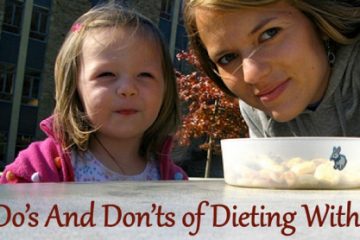The State Of Obesity In America, An Executive Brief
Background
Since 1980 obesity rates among adults, children, and adolescents have steadily risen to the point that the problem has now reached epidemic proportions. The ramifications of this epidemic are widespread and far-reaching. This executive brief summarizes the causes, trends, effects, implications, and possible solutions of obesity in America.
By way of background information, the formula for calculating ideal weight is known as the body mass index (BMI). While the formula is not a precise indicator of overall health, it does provide researchers with a fairly accurate measure of optimal weight. A BMI ratio between 18.5 – 24.9 is considered a healthy weight range, 25 – 29.9 overweight, and greater than 30 obese.[1. Agatston, Arthur. “Why Your BMI Can Be Misleading.” Available from http://www.everydayhealth.com/diet-nutrition/weight-management/why-your-bmi-can-be-misleading.aspx (accessed Sept 21, 2013).]
Causes Of Obesity
Researchers have not been able to pinpoint the exact cause(s) of obesity. What is clear is that obesity is the result of decreased levels of physical activity, excessive consumption of calories, or a combination of the two.[2. U.S. Department of Health & Human Services. “Childhood Obesity.” Available from http://aspe.hhs.gov/basic-report/aspe-childhood-obesity-white-paper (accessed Sept 19, 2013).]
Despite the enormous sway of friends and media in teens’ lives, parents are still the single greatest influence in a child’s life – for better or worse. Life-style patterns, choices, and habits formed in the home will likely continue into adulthood. Therefore, it is no exaggeration to suggest that parents directly impact their children’s attitudes, beliefs, behaviors regarding food and exercise.

Photo Credit: fabiovagamundo via Compfight cc
Weight-Related Trends
• Over the course of 30 years there exists a positive correlation between the rise in adult obesity rates with child and adolescent rates.
• Children of obese parents are more likely to either be or become obese.
• Today’s obese children are more likely to become tomorrow’s obese adults.
• More children are eating food away from the home, which is preventing them from getting the vitamins and minerals necessary for optimal health.
• Children of working mothers are less likely to consume breakfast.
• Children of single parent families are more likely to be overweight or obese than children of two-parent families.
• There exists a positive correlation between women working outside the home and the rise in childhood weight problems.
• Socio-economic status (SES) does appear to affect obesity trends: a lower SES is loosely correlated to kids being overweight and obese. However, these trends tend to vary by racial and ethnic groups. For example, lower SES whites are more likely to be overweight and obese, but children of upper black and Latino SES appear no less likely to be overweight or obese.
Obesity In America Statistics
• 35.7% of all U.S. adults are obese; 16% of children ages 6-19 are overweight.
• 60 million Americans 20 years and older are obese; 9 million children and teens ages 6-19 are overweight[3. Get America Fit. “Obesity Related Statistics in America.” Available from http://getamericafit.org/american-health-facts/ (accessed Sept 19, 2013).]
• Annual medical costs of obesity in the U.S. were $147 billion in 2008.[4. Center for Disease Control. “Adult Obesity Facts.” Center for Disease Control. Available from http://www.cdc.gov/obesity/data/adult.html (accessed Sept 19, 2013).]
• Obesity is the #2 cause of preventable death in the U.S.
• The food and beverage industry spends more than $10 – $12 billion annually to market their products to children and youth.
• The fast food industry spends $3 billion in television advertising to children.
• Children in the U.S. spend an estimated 25 percent of their waking hours watching television.
Long-Term Health Effects
The long-term individual health effects of childhood and adolescent obesity are enormous. Obesity at a young age increases the risk of developing high cholesterol, hypertension, cardiovascular problems (i.e. heart attacks, strokes, and other heart diseases), respiratory ailments such (i.e. asthma), orthopedic problems (i.e. arthritis), depression, and type-2 diabetes.
Lower quality of REM sleep caused by sleep apnea can adversely affect academic performance in school.
Excessive weight lowers a child’s willingness and ability to engage in physical activity. The cumulative effect of all these health issues is an overall decreased quality of life.
Adverse Economic Effects
Sadly, the individual is not the only one bearing the adverse consequences of excessive weight.
The medical costs associated with treating all these preventable diseases exceeded $117 billion dollars in 2000. That number is even higher today as rates have continued to go up since then. Most of those expenses are paid by the government through Medicaid and Medicare. This becomes an enormous budget liability on a government that is already $17 trillion+ in debt. The economic loss to businesses is also substantial.
Second, overweight and obese individuals are more likely to miss work due to sickness, which places additional strain on productivity. Many employers are already operating on a skeleton work force. When their employees miss work, everyone suffers. Can you imagine how much stronger our work force could be if we simply look better care of ourselves?
Furthermore, with an estimated 78% of Americans not meeting basic activity level recommendations, obesity becomes a national security issue.[5. Get America Fit. “Obesity Related Statistics in America.” Available from http://getamericafit.org/american-health-facts/ (accessed Sept 19, 2013).] The military is finding it increasingly difficult to find recruits capable of passing the physical fitness tests. In fact, weight issues are the number one reason young people fail to enlist.[6. D’Arcy, Janice. “Childhood obesity becomes a military matter.” Available from http://www.washingtonpost.com/blogs/on-parenting/post/childhood-obesity-becomes-a-military-matter/2012/09/24/2d832e9a-0683-11e2-a10c-fa5a255a9258_blog.html (cited Sept 24 2013).]
Implications
Parents need to be aware of the fact that children imitate their beliefs, attitudes, and behaviors. They are the single greatest influence in their children’s lives. For better or worse, children are subconsciously adopting a life-style that will likely continue into adulthood.
Thus, parents need to carefully evaluate the short and long-term consequences of double full-time employment outside the home. They also need to take a hard look in the mirror at their own diet and exercise habits. If significant gains are to be made in this area of childhood obesity, then the whole family’s way of life must be addressed.
Solutions
Ultimately, the only way to tackle the obesity epidemic is to have an accurate understanding of the contributing factors. In America, those factors are multi-layered.
For one, there exists a fast-food culture in our society that is difficult, if not impossible, to transform.
Second, the materialistic and consumerist values of our culture encourage dual income families, and by consequence, as the studies show, tend to discourage healthy eating habits.
Third, by its very nature, our free-market economic structure does little to encourage good diet. Companies that can produce the best food products at the cheapest cost are going to win. Disgustingly, most mass food producers are more concerned with their bottom line than the consumers’ good health. All-natural meats, fruits, and vegetables are available, but they come with a cost – not all are able to afford such higher quality foods.
Given such complexities, it will be difficult to turn the tide on a national level. But that should not discourage us from impacting one family at a time. There are a number of great resources available for parents on good nutrition and exercise.
Given the uncertain future of our health care system in the U.S., it would be wise for parents to assume a more proactive, preventative approach to their child’s overall health.
In the end, a reactive approach and excessive reliance upon medicine, which is the basic structure of our current health care system, is ill-equipped to deal with our obesity epidemic. The reason is because it fails to account for the initial causes of the problem in the first place.
Brian L. Hershey is co-owner of ProvenNutritionForKids.com and HersheyHolistichealth.com. He holds a Bachelors in Elementary & Middle-Level Education, a Masters in Theology (2014) from Dallas Seminary, and over 7 years experience working with youth full-time. You can also connect with Brian on Facebook {fb.com/brianlhershey}.

 Brian L. Hershey is co-owner of ProvenNutritionForKids.com and HersheyHolistichealth.com. He holds a Bachelors in Elementary & Middle-Level Education, a Masters in Theology (2014) from Dallas Seminary, and over 7 years experience working with youth full-time. You can also connect with Brian on Facebook {fb.com/brianlhershey}.
Brian L. Hershey is co-owner of ProvenNutritionForKids.com and HersheyHolistichealth.com. He holds a Bachelors in Elementary & Middle-Level Education, a Masters in Theology (2014) from Dallas Seminary, and over 7 years experience working with youth full-time. You can also connect with Brian on Facebook {fb.com/brianlhershey}.

4 Comments
Errol · March 28, 2014 at 12:27 pm
Generally I do not read article on blogs, however I would
like to say that this write-up very compelled me to try and do
so! Your writing taste has been amazed me. Thanks, very great post.
Bonnie | ProvenNutritionForKids · March 28, 2014 at 1:02 pm
Thanks, Errol! Glad you enjoyed it.
Aika · April 23, 2019 at 9:56 pm
According to the CDC National Center for Health Statistics, the prevalence of obesity was 39.8% and affected about 93.3 million US adults in 2015-2016, making it a serious health problem in the US. I think we should start taking care of our health now by eating a well-balanced diet before it’s too late.
Bonnie | ProvenNutritionForKids · July 17, 2019 at 9:50 am
So true, Aika.